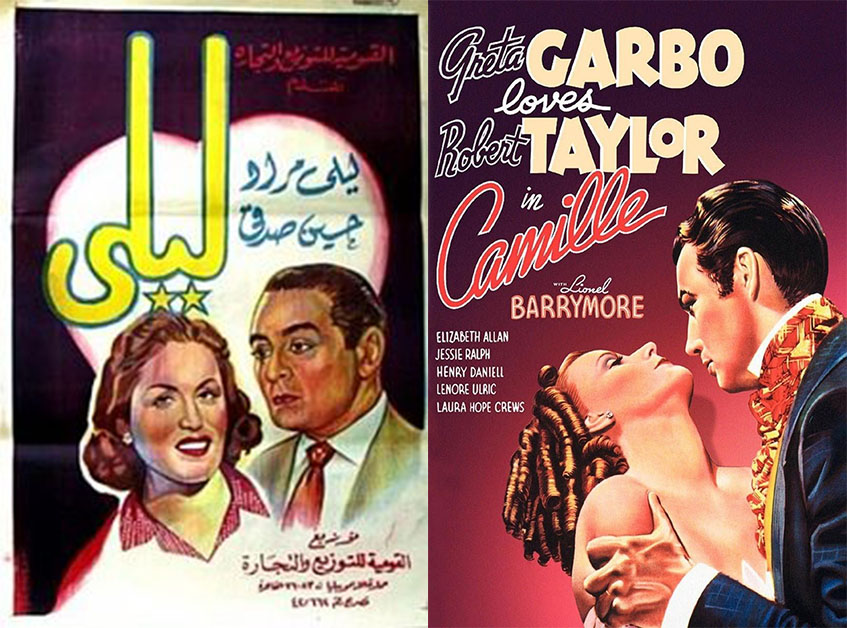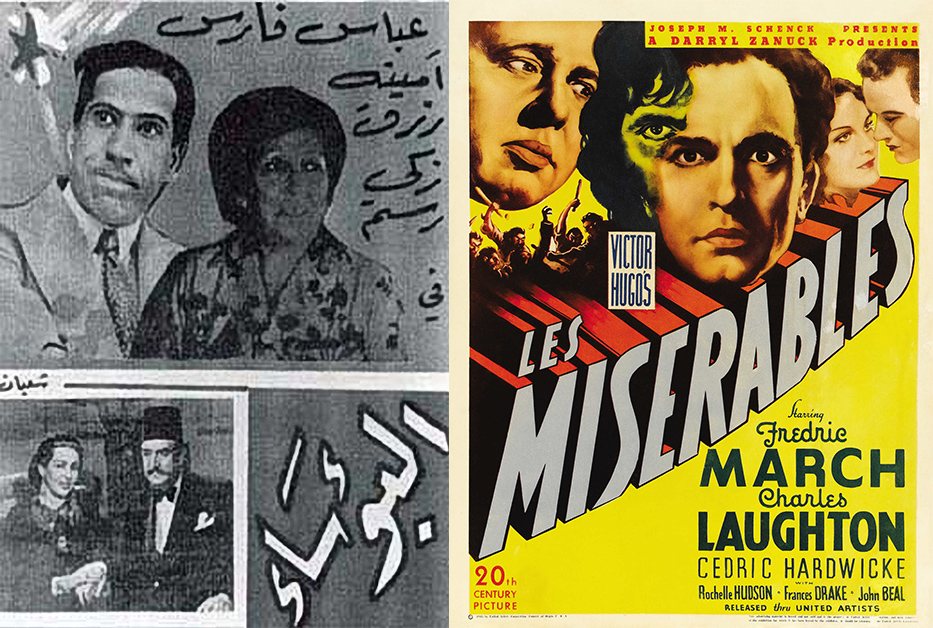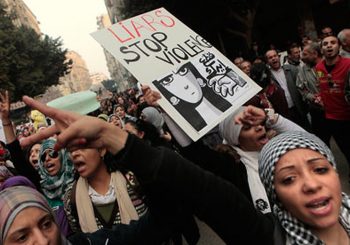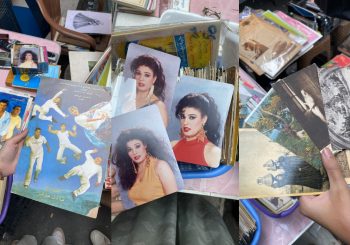
Egyptian cinema is known to be prevalent across the Middle East, with most of the region being familiar with the films, the actors and the dialect. In fact, Egyptian cinema has a long history and dates back to the late 19th century, having begun around the same time as it did in the west. From 1896 and onwards, a few silent films were made but it wasn’t until the introduction of sound to film that really allowed Egypt’s film industry to sky-rocket.
Egypt witnessed its very own ‘Golden Age of Cinema’ around the early to mid 20th century (namely the 1940’s, 50’s and 60’s) and in the 1950’s, Egypt’s film industry was the world’s third largest. Although Egyptian cinema is generally highly regarded – in history and up until now – the industry also has a history of ‘borrowing’ western material and interpreting it to fit Middle Eastern audiences.
That’s not to say that Egyptian cinema isn’t home to numerous original cinematic gems – however, it is interesting to note the differences between the films that were made whose plot-lines were borrowed from well-known western films or stories. It is of course natural for some films to be based off of well-known stories, as this has always happened in cinema where some famous films could be based off of famous novels, for example.
However, it is also interesting to note how this borrowing or re-interpretation of material or stories has evolved throughout the years in Egyptian cinema. In the past, even if films were based on well-known stories or western films that were previously made, their Egyptian counterparts still always seemed to have a rather sophisticated level of originality to them. With Egyptian cinema’s decline in the late 20th century however, came a decline in the way in which western material was borrowed as well.
Nowadays Egyptian cinema is on the rise once again, producing more and more films that are both original and seem to highlight the industry’s artistry. Although the re-using and recycling of old material is something that will never cease to exist – and it shouldn’t, as most of these stories are timeless for a reason – it is worth noting how exactly this material is transferred and transformed.
The following list showcases four Egyptian films that were based off of western films and/or stories… the first two of which date back to earlier cinematic days (and both of which are originally based off of well-known novels), and the latter of which are more modern adaptations.
Laila (1942) and Camille (1936)

The 1942 film entitled Laila starring Laila Mourad and Hussein Sedky tells the story of a beautiful young singer called Laila (Mourad) who is sick with tuberculosis. Farid (Sedky) falls in love with Laila and strongly pursues her, but his father who is concerned with his son’s future asks Laila to back away from Farid. Although both Laila and Farid are in love, Laila decides to respect Farid’s father’s wishes and tells Farid that she is in love with someone else. After Farid’s father confesses to what he asked of Laila, Farid rushes to Laila’s side as she lies in bed dying as a result of her illness.
The 1936 film Camille stars Greta Garbo and Robert Taylor and tells the exact same story of the young lovers. Marguerite Gautier (Garbo) is born into a lower-class family, but in time becomes well known, living in high society Paris with her financial needs covered by the wealthy Baron de Varville. Marguerite however falls in love with Armand Duval (Taylor) who in turn, also falls in love with her. Although she is sick with tuberculosis, Marguerite is prepared tp give up the Baron’s assistance to be with the man she loves. Armand’s father however begs Marguerite to turn away from his son, knowing her past will ruin his future in Paris. She does so and the film ends with Marguerite’s tragic death in the arms of her suitor Armand.
Both of these films are actually based off of Alexandre Dumas’ 1848 novel and play La Dame aux Camélias (The Lady with the Camellias, or more commonly known in English as Camille). There have also been more modern adaptations of this story such as the 2001 musical film Moulin Rouge whose plot is loosely based on this tragic romance.
Al Bo’asa’ (1944) and Les Misérables (1935)

Al Bo’asa’ (The Miserable Ones) tells the story of Al Sharkawi (starring Abbas Fares) who was imprisoned for stealing as a result of his poverty-stricken life. After having his sentence doubled due to his constant revolt against the injustices he was facing, Al Sharkawi managed to escape prison and make a new life for himself. He began to gather wealth and changed his name to Abdel Fattah Basha Sherif. Under his new alias, he would make an effort to help the poor and he also adopted a young girl whose mother had passed away. However, the brutal officer from the prison finds him, recognizes him and continues to pursue him.
This 1935 four-time Academy Award nominated film revolves around the famous story of Jean Valjean (starring Fredric March) who was imprisoned after trying to steal some food as a result of his extreme poverty. Although the film’s plot slightly differs from that of the well-known novel it is based off of, it still tells the story of the fugitive who left prison and made something if himself. Valjean later changes his name, father wealth, helps the poor and adopts a young girl. However, the officer from the prison recognizes him later in life and continues to pursue him.
Both of these films are based off of Victor Hugo’s 1862 novel of the same name, Les Misérables. The novel’s intricate details that unfold the lives and hardships of each of the novel’s characters is a true testament to great storytelling, in which readers are transported to another world and grow empathetic towards the characters and the situations. This particular story is one that is truly timeless and still highly regarded to this day, having had a recent Academy-Award winning film adaptation of its musical counterpart in 2012.
Halaweit Roh (2014) and Malèna (2000)

Halaweit Roh (Beautiful Soul) is a 2014 film starring Haifa Wahbi and revolves around a beautiful young woman whose name is Roh (Soul) and lives in a small neighborhood with her mother-in-law. Soul’s husband is away traveling and the young woman seemingly starts to cause trouble and unrest amongst her neighbors as a result of their infatuation with her.
The 2000 film Malèna is set in a small Sicilian town in 1940’s Italy and stars Monica Bellucci as the beautiful young woman known as Malèna. Malèna’s story also revolves around her coveted beauty which seems to cause problems amongst townsmen and jealous townswomen as her husband is away at war. The young woman is disowned by her grandfather and then find out that her husband has dies at war… with no support around her, Malèna falls into prostitution up until the war is over. Throughout the film, we see a young towns-boy who is also infatuated by her beauty, but seems to start genuinely caring for this woman and tries to protect her from afar.
With Halaweit Roh’s release in 2014, there was downpour of criticism both in the sense that the film was deemed too sexually explicit for Middle Eastern audiences, and also in that it beared an almost uncanny resemblance to the 2000 film Malèna (in terms of both plot – which was slightly altered – as well as the general look and feel).
Al Harb Al Alameya Al Talta (2014) and Night at the Museum (2006)

Al Harb Al Alameya Al Talta (World War Three) is a 2014 film starring Ahmed Fahmy and revolves around a character called Khamis (Fahmy) who stumbles upon an old abandoned Wax Museum. In this wax museum, the statues come to life between the hours of five o’clock in the afternoon and five o’clock in the morning. After Khamis’ discovery of this mystical fact, he ventures on an adventure of trying to help the former museum director in finding a solution to this. Somehow, there ends up being two teams that are formed within the museum – those of the ‘good’ statues representing seemingly good people throughout history such as Gandhi and Tutankhamun (led by Khamis) and those of the ‘bad’ statues led by the wax statue of Hitler who wants to take his revenge and start world war three. In the end the ‘good’ team prevails.
Night at the Museum is a 2006 film starring Ben Stiller as Larry Daley, a divorced father who applies for a job as a night watchman at New York City’s American Museum of Natural History. While on the job, Daley discovers that the museum’s various exhibits come to life at night. With this discovery, Daley instinctively tries to quit his job, but then returns with the hopes that he can impress his son with the live exhibits. Throughout the film, we see Daley establish relationships with the various exhibits and the people throughout history they represent, and when some of the exhibits try to escape… the conflict is ultimately resolved a huge party is held at the end.
Although having shared almost the same exact plot as its 2006 western counterpart, Al Harb Al Alameya Al Talta was widely successful in Egypt following its release, having still been met with some criticism due to its resemblance to the Hollywood film Night at the Museum. However, perhaps as a result of its tailored comedy and elements that fit Egyptian/Middle Eastern society, it is understandable as to why Egyptian audiences met the film with enjoyment. In both cases, the films offer a light-hearted and entertaining story that is both fun and imaginative.







Comments (0)